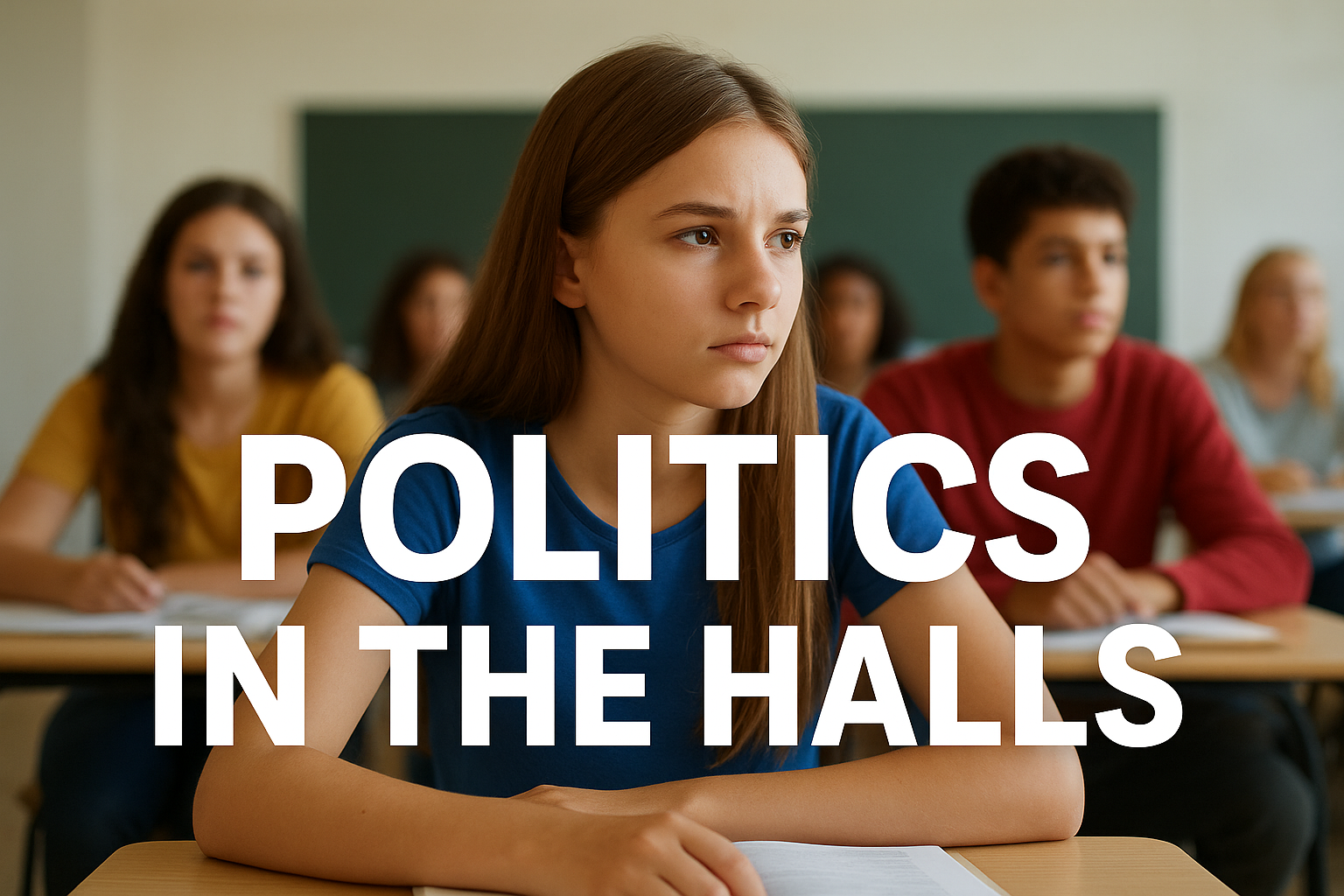

When Following the Rules Becomes a Disruption: The Towson Flag Controversy and a Lesson in Process
In a situation out of Towson, Maryland, a high school student’s attempt to call attention to a missing flag has sparked debate—not about the flags themselves, but about the process schools follow when student behavior becomes disruptive. The incident has garnered attention in part because of the involvement of an alleged suspension that may not have followed proper procedure.
According to multiple reports, including coverage by Fox Baltimore, a student noticed that two of his classes lacked American flags, which are required by policy to be displayed in every classroom. When the assistant principal reportedly failed to act on the student’s concern, the student escalated the matter by visiting the Board of Education and ttempting to speak with someone in authority, all while recording the interaction. The response? A reported seven-day suspension.
There are several issues in this incident, and it’s important not to reduce the matter to a false narrative of patriotism versus censorship. This wasn’t about suppressing a student’s desire to see American flags in classrooms. It was about how the situation was handled—by the student, and more importantly, by the school.
Let’s start with the student’s actions. While admirable in intent, he made a serious mistake by bypassing the appropriate chain of command. Skipping the school principal and area superintendent and others to knock on the door of the Board of Education is not how students—or adults, for that matter—are expected to address grievances within an organization. Schools are right to set boundaries around that kind of behavior. Central office staff cannot function properly if anyone dissatisfied with a classroom issue shows up unannounced to demand answers. That kind of disruption is simply not sustainable.
But the real story here is not about whether the student’s actions were disruptive—it’s about how the school handled the response. Reports suggest that the student was suspended for seven days. If true, that’s a heavy consequence for what was, at its core, a procedural violation. But what’s more concerning is the allegation that the student was denied due process. Was he given a chance to share his side of the story? Was he called in for a formal meeting with school administrators? Was he informed of the reason for his suspension in writing? Was he allowed to bring witnesses or provide context? These are not formalities—they are rights.
Under Maryland law, students are entitled to due process before a suspension. That means more than just a phone call home or an offhanded comment from a staff member. If it’s true that someone other than the principal announced or authorized the suspension, that could be a violation of policy. Only principals have the authority to suspend students. A staff member—even one as well-intentioned and respected as a system-level leader—cannot short-circuit that responsibility.
The incident also exposes how a minor oversight—missing flags in classrooms—can snowball into a full-blown controversy. Flags disappear, especially the small ones often mounted above whiteboards. They get removed for cleaning, shuffled during summer maintenance, or simply forgotten. It’s the kind of thing that administrators are supposed to catch during walkthroughs. This could have been a teachable moment, quickly resolved by simply saying, “You’re right, we’ll fix that,” and following through.
Unfortunately, a missed opportunity turned into a disciplinary action. And now, instead of talking about how to improve oversight or ensure students feel heard, the district may find itself facing legal scrutiny about how a suspension was carried out.
To be clear, schools do have the right to discipline students for disruptions. This wasn’t a free speech violation, despite what some may claim. Students have every right to express themselves—but that right does not extend to showing up at the Board of Education unannounced, recording staff, and requesting immediate access to leadership.
Still, exercising disciplinary authority requires more than just asserting that a line was crossed. It requires careful documentation, clear communication, and strict adherence to process. If that didn’t happen in this case, the district could find itself on the losing end of a legal argument—not because the student was right, but because the adults didn’t follow the rules.
Ultimately, this was a problem that could have been solved with a $5 flag and a little follow-through. Instead, it’s a cautionary tale for both students and schools. For students: follow the chain of command. For schools: when policy violations occur—either by omission or behavior—address them in a way that respects the process. Because in public education, how we respond often matters more than what started the issue in the first place.
Dig Deeper With Our Longreads
Newsletter Sign up to get our best longform features, investigations, and thought-provoking essays, in your inbox every Sunday.
The MEN was founded by John Huber in the fall of 2020. It was founded to provide a platform for expert opinion and commentary on current issues that directly or indirectly affect education. All opinions are valued and accepted providing they are expressed in a professional manner. The Maryland Education Network consists of Blogs, Videos, and other interaction among the K-12 community.










